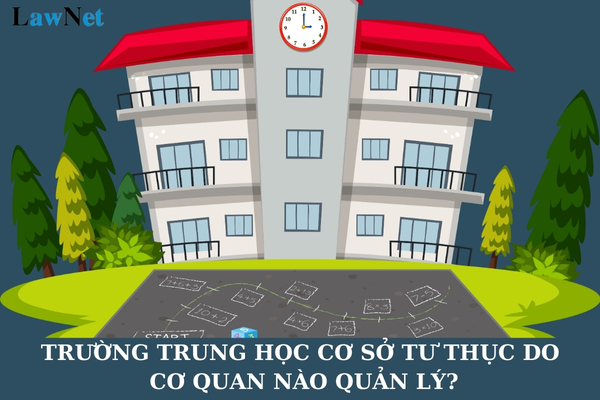Which authority manages private lower secondary schools in Vietnam? What is the organizational structure of a private lower secondary school in Vietnam?
Which authority manages private lower secondary schools in Vietnam?
Under Clause 1, Article 5 of the regulation on organization and operation of private primary schools, lower secondary schools, upper secondary schools and combined schools as issued together with Circular 40/2021/TT-BGDDT, the regulations are as follows:
Decentralization
1. Chairpersons of the People's Committees of districts shall issue the establishment decision and the district-level People's Committees shall be in charge of management of primary schools, lower secondary schools and combined schools (in which the lower secondary school is the highest level)
2. Chairpersons of the People's Committees of provinces shall issue the establishment decision and Departments of Education and Training shall be responsible for management of upper secondary schools and combined schools (in which the upper secondary school is the highest level) Departments of Education and Training shall cooperate with the People's Committees of districts in management and organization of relevant educational activities of combined schools (in which the upper secondary school is the highest level).
3. The decentralization of private schools invested by foreign investors shall comply with regulations of the Law.
Therefore, a private lower secondary school is established with the permission of the Chairman of the District People's Committee and is managed by the District People's Committee.

Which authority manages private lower secondary schools in Vietnam? What is the organizational structure of a private lower secondary school in Vietnam? (Image from the Internet)
What is the organizational structure of a private lower secondary school in Vietnam?
Under Article 6 of the regulation on organization and operation of private primary schools, lower secondary schools, upper secondary schools and combined schools issued together with Circular 40/2021/TT-BGDDT, the organizational structure of a private lower secondary school in Vietnam includes the following components:
- school council;
- Control Board;
- Principal and Deputy Principal(s);
- Emulation and commendation council;
- Discipline council;
- Advisory council;
- affiliate of the Communist Party of Vietnam;
- affiliate of trade union;
- affiliate of Ho Chi Minh Communist Youth Union;
- affiliate of Ho Chi Minh Young Pioneer Organization;
- specialized teams;
- office team; and
- units in charge of educational activities characteristic of the school and other necessary activities as required by the mission of the private schools
What are the duties and powers of the school council of a private lower secondary school in Vietnam?
According to Clause 4, Article 7 of the regulation on organization and operation of private primary schools, lower secondary schools, upper secondary schools and combined schools issued together with Circular 40/2021/TT-BGDDT, the duties and powers of the school council of a private lower secondary school in Vietnam are:
- Resolve the school’s development objectives, plans, vision and strategies, projects and submit them to the invertor or owner conference for approval;
- Resolve regulation on organization and operation of the school and submit them to the investor or owner conference for approval;
- Approve the plan on organizational structure and problems regarding the organization and personnel of the school according to the proposal of the principal; request addition, dismissal or discharge of members of the school council; propose the recognition, dismissal or discharge of the principal or deputy principal of the school, submit them to the investor or owner conference for approval and the competent authorities for consideration and decision on recognition;
-Approve the school’s education plan; supervise admission and organization of activities included in the school’s education plan;
- Supervise implementation of the school council’s resolutions, the management of finance and property of the school and implementation of democratic regime in the school activities.

